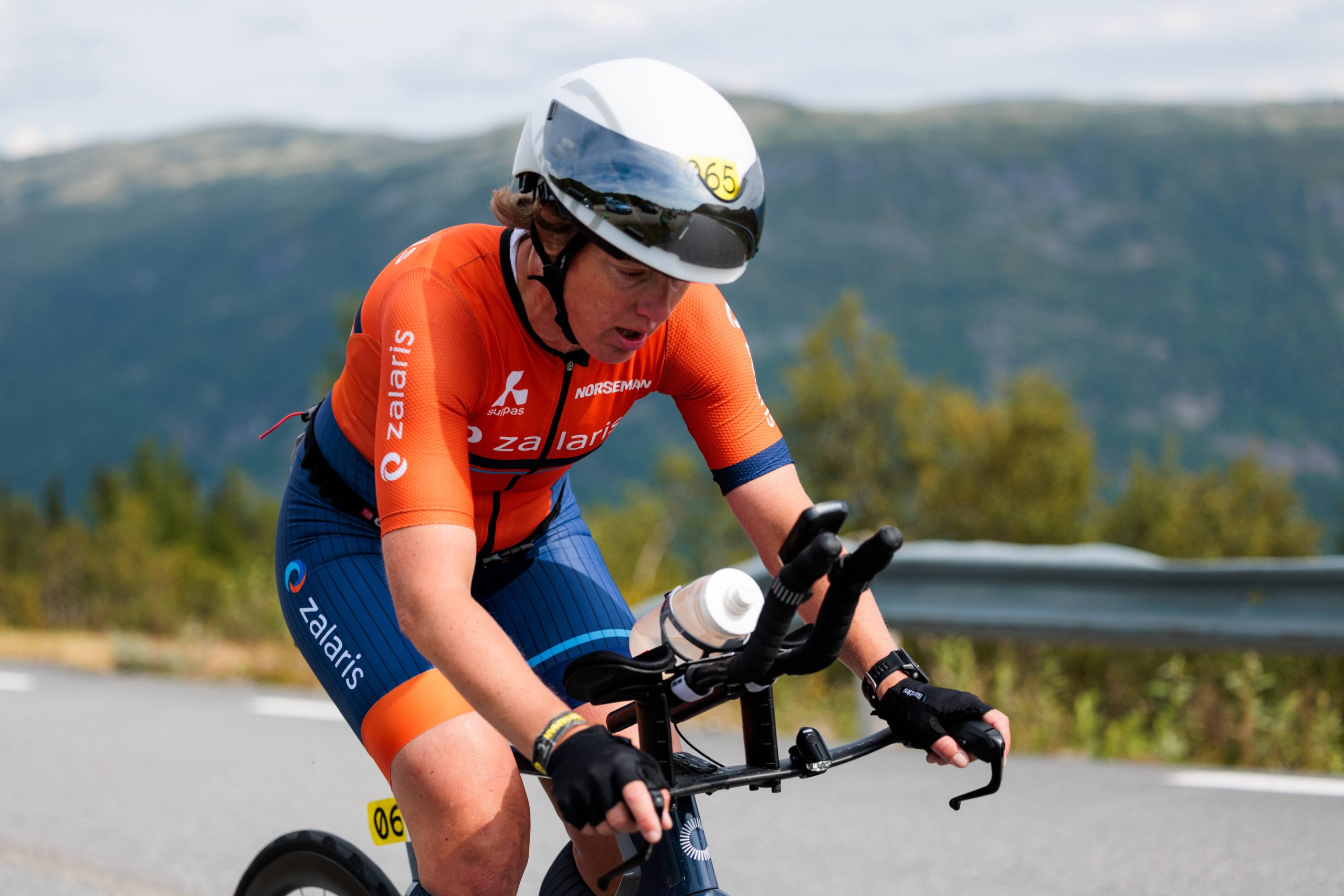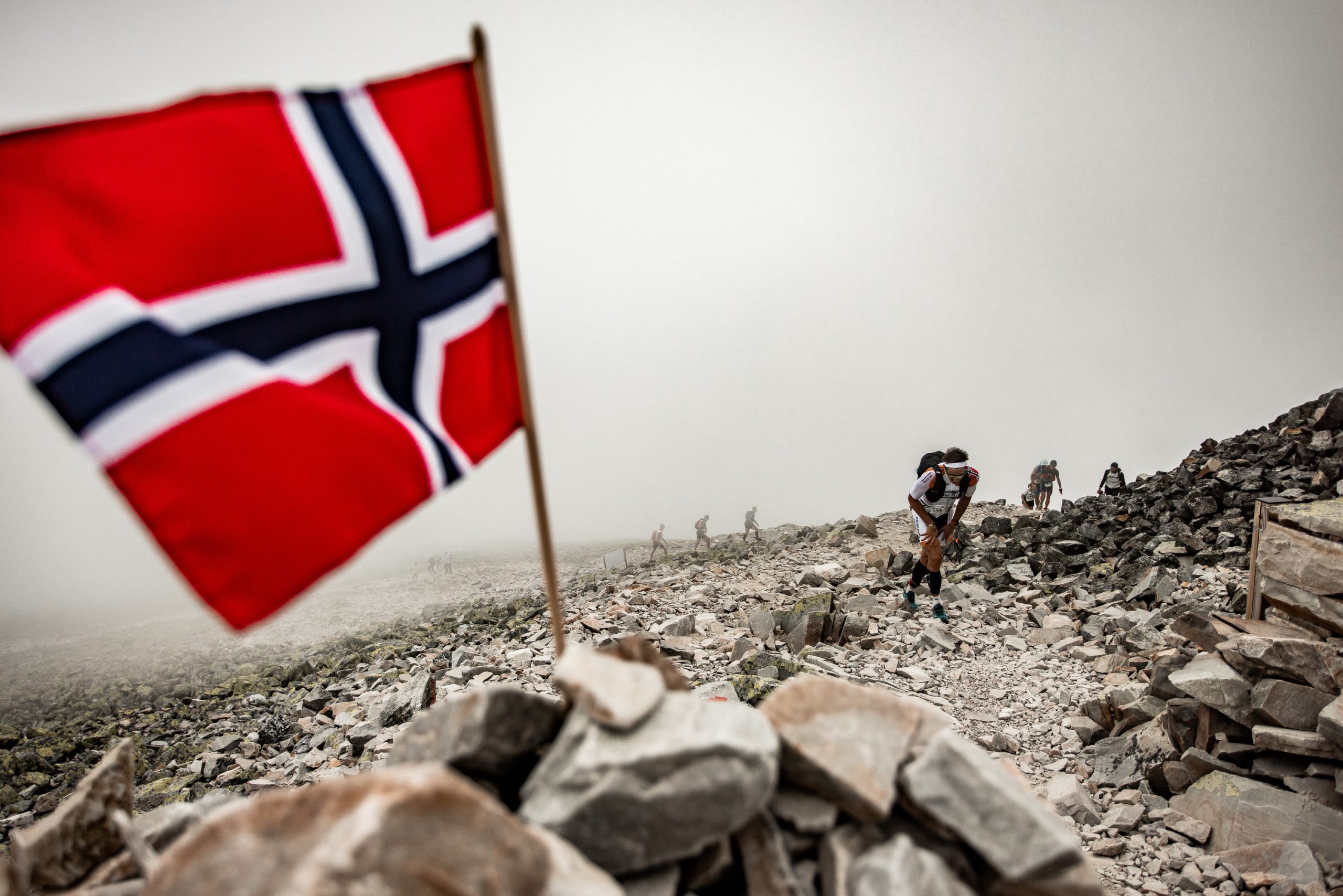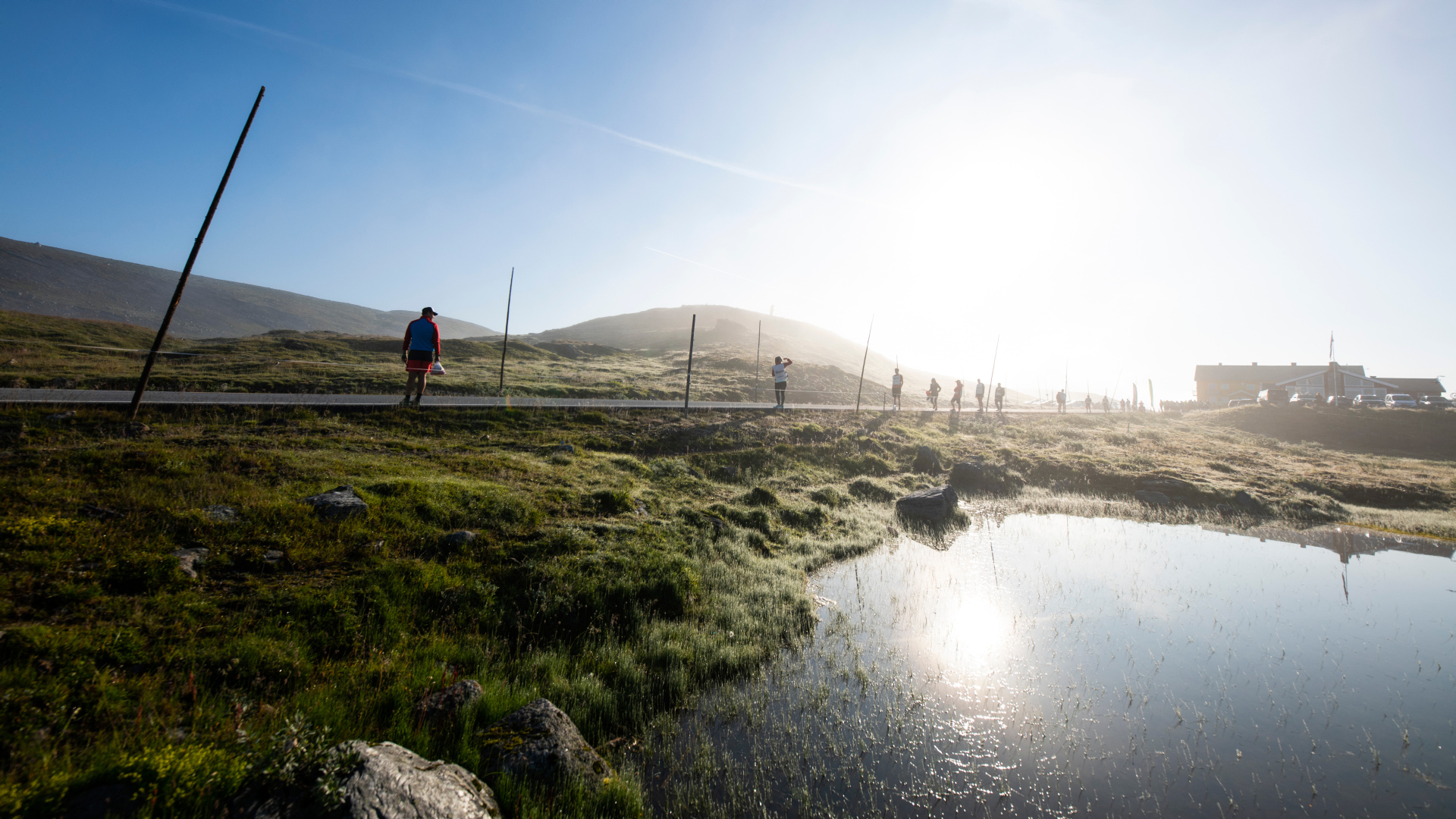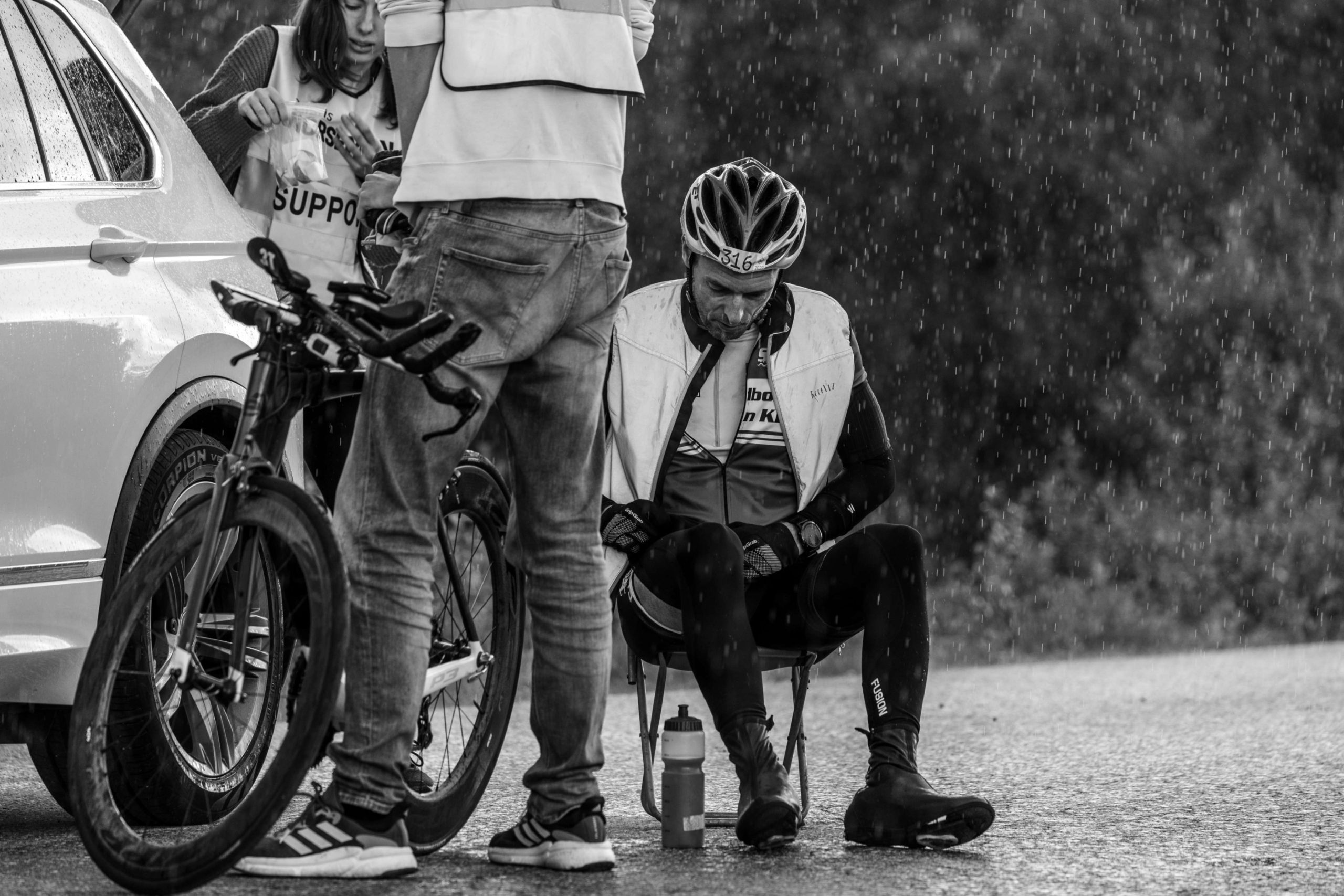Listen to the episode on:
Scroll down for the full episode notes with accompanying film and images.
In this episode, we follow two parallel journeys. Ex-marine and 2019 Norseman black tee athlete, Russ Corn, shares a whole new – yet old, dimension to Norseman’s racecourse.
This episode is a little different from our past conversations, because we follow two parallel journeys. Russ shares with us his own Norseman race, while reflecting on and following in the footsteps (or should we say ski tracks!) of one of Norway’s national heroes, World War II resistance fighter Joachim Rønneberg.
Rønneberg’s incredible and epic journey also started near Eidfjord in the winter, with the aim of sabotaging and destroying heavy water creation by a hydro plant near Rujkan, which is situated right by Gaustatoppen.
Rønneberg and his story sits very close to Russ’s heart and we chat about why it influenced him to race Norseman and how it impacted his race.
Adelaide: Hello Russ Corn, welcome to Norseman Radio!

Russ: Hi Adelaide!
Adelaide: I’m really excited about this episode because it’s slightly different to what we usually do. So, before we dive in to Joachim Rønneberg and your relationship with him, could you please tell us who you are and what it is you do in the world today?
Russ: Currently, I’m CEO of a due diligence business called Fulcrum Diligence based in The Shard, London, although that’s got little bearing on our conversation today. I ran Norseman in 2019, age 50.
Adelaide: Amazing! The reason we have you on is not only because you competed in Norseman last year, but because you have a special connection to Joachim Rønneberg, who also has a connection to Norseman.
So, for those who don’t know who Joachim Rønneberg is, would you please introduce him to us and tell us how you became enraptured by his story?
Russ: I got to know Joachim in a very privileged way over the last eight years of his life. And really, my fascination and regard for Joachim dated back probably to my joining the Royal Marines in the UK.
I joined the Marines in 1988, and I was lucky at that time to join an expedition to Norway, which was actually in Jotunheimen.
Whilst there, I climbed with another team Glittertind and Galdhøpiggen, and so began a love affair with Norway. I spent over 14 years in the Marines and I was able to go back and forth to Norway on a number of occasions. Oddly, at that time, it’s something of an anachronism, but the Marines were responsible for defending what they called the Northern Flank in the Cold War. And after the Cold War, we continued going to Norway because it was such a fantastic environment to train for mountains and Arctic warfare.
And being in the Marines, you are taught to Telemark ski, and those, again, that are familiar with skiing will know that Telemark is essentially free the heel, free the mind. It’s skiing where only the toe of the boot is attached to the ski and it allows you great freedom. And of course, that probably introduced me to the heroes of Telemark. And again, some listeners will be familiar with the famous film from the 1960s called The Heroes of Telemark.
At the time I probably just thought, “Well, this is interesting, Telemark skiing.” And then, as you got more and more involved with the story, you realized that Telemark, of course, is an area of Norway as well as a way of skiing. And the area of Norway that Telemark essentially refers to is also the area of Norway in which Norseman takes place.
Over a number of years, I became distantly familiar with the story of Joachim and the heroes of Telemark, and I was gradually made more aware of what a poor representation the film was of the events that had actually taken place.
Then, as some listeners will know, there’s a club in London called the Special Forces Club, which I was privileged enough to join in 2003 when I left the Royal Marines. And it was there I was lucky enough to meet Joachim on a number of occasions, host him on a number of occasions, and learn more of his story.
So that’s really how I came to understand the region and also really how I became familiar with Norseman, because I was just more familiar with the area of Hardangervidda, than I was necessarily with the race, because of this amazing Second World War story.
Adelaide: Just to connect the dots for our listeners who may not have heard of Joachim, how did Joachim Rønneberg become associated with the Special Forces Club?
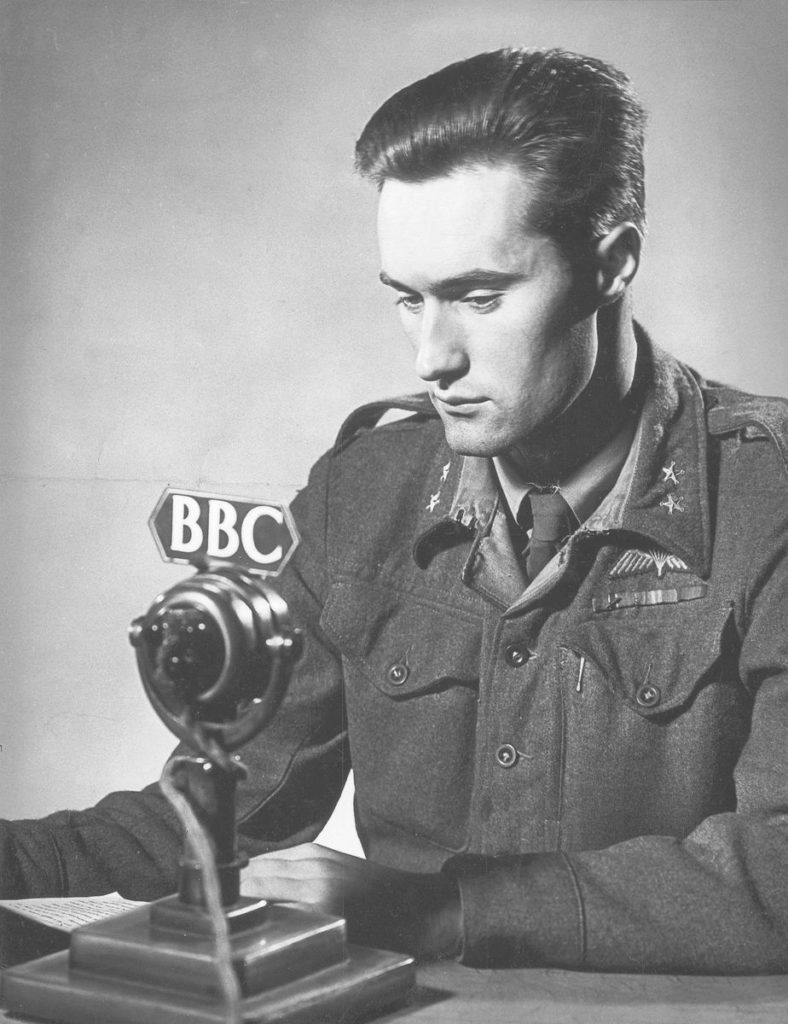
Russ: The Special Forces Club is a unique place in London. It’s probably inappropriately named for the 21st century. It was actually established at the end of the Second World War and it was established by members of the Special Operations Executive, or SOE. The SOE were a unique organization made up of individuals who wished to resist Nazi occupation across Europe, and then further afield as the war went on.
In 1940, Winston Churchill gave them an instruction, effectively, which was to famously ‘set Europe ablaze’. And it was made clear to anyone in the occupied territories who wished to resist Nazi hegemony, that they could make their way to the UK where they would be trained and would then return into Europe to mount sabotage operations, reconnaissance, whatever was required by the Allies.
Joachim is probably one of our most famous sons in that regard, in that operation Gunnerside, which Joachim led in the Second World War, was centered upon the production of heavy water, again, which brings us to Vemork, because heavy water was being produced at the Norsk Hydro plant just up the valley from Rjukan. Operation Gunnerside led by Joachim, really became the epitome of skillful commando sabotage under extreme odds and in extreme conditions.
It really was the humility of the individuals that undertook the operation, remarkably, all six of the Gunnerside team survived into their 90s, and I was lucky enough to meet a few of them over the years. It just became a huge beacon of light in many respects for how to live your life and you just found yourself completely humbled by what they’d put themselves through back in 1943.
Of course, Joachim was part of a larger story, but he really became the person as the Parol Commander that most people became familiar with, and he became a national hero in Norway, and many Norwegian listeners will be more than familiar with his story.
He spent many, many years traveling around schools in Norway telling them the story, recounting the tale. In many respects, just to underline the value he placed on freedom and peace, and the price that was paid by so many people to secure that longterm.
Adelaide: Before we dive even deeper into how Joachim is connected to Norseman, would you tell us the amazing story of Memorial Day of 11th of November, when you met him in the UK?
Russ: That was incredible. I was lucky enough to be asked to host Joachim and it was probably around 2010/2011, so he was just turning 90 at the time. He was incredibly lucid, but hard of hearing, so didn’t necessarily like being in noisy places. I don’t like being in noisy places, so I can’t blame him either. But we took a taxi together to Westminster Abbey and in the cloisters of Westminster Abbey there’s a memorial to those individuals who were killed in the Second World War serving with the Special Operations Executive.
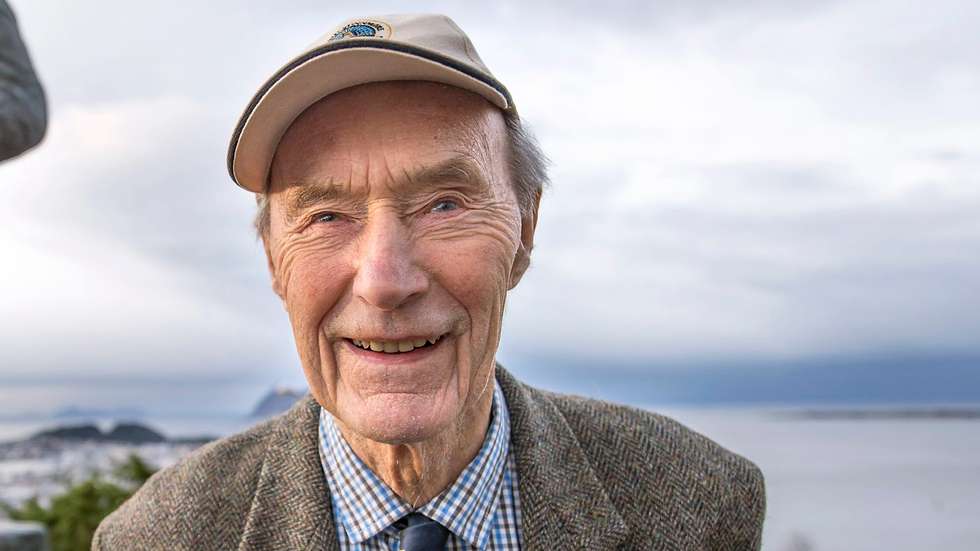
We were conducting a small remembrance service on the 11th of November and the Chairman of the club at the time said a few words and then asked Joachim if he would like to add anything. There was only 20 or 30 of us there and he said yes, he would like to say something, and he pointed with his stick at the huge Royal Standard that flies over Westminster Abbey, and for those people who are familiar with London, you’ll know which one I’m talking about, it’s the most enormous flag.
And quite incredibly, he said, “I look at the Standard today, and I reflect on a date in May 1945 when I sat and I looked at that same Standard, as I sat on the embankment, on the morning after VE Day, having spent the whole night being washed up Oxford Street and Regent Street by the crowds, and then back down to Parliament Square. I found myself at dawn, at 5:00 in the morning, looking up at that Standard, realising the war was finally over in Europe.”
Because the flags had been used as aiming marks during the bombing campaign against London and other cities, so no buildings had flown flags. And the flag, therefore, for him represented physically freedom.
Joachim not only completed Operation Gunnerside, but he went back and completed stuff he was much more proud in 1944/45 in preventing the Nazis destroying Norway as they retreated. And I can tell you, there wasn’t a dry eye in the house. There was 29 of us that were rooted to the spot listening to this story and recognising what an extraordinary life he’d led.
Adelaide: I just got goosebumps listening to that story. Now we’re going to really dive into it. As I said, you’ve touched upon why Joachim is connected to Norseman, but could you please tell us the significance of Joachim’s journey to the Norseman course that we know today?
Russ: In order to put it in context, I’ll start with the significance of what they were trying to achieve. I’m no physicist, so this is very much a layman’s account, but in the 1930s the Nazis and the Allies were in a race to harness the potential of atomic energy. And there’s an amazing Norwegian guy called Leif Tronstad and he was a physicist in Norway who understood the significance of the potential of splitting the atom.
One of the components required to slow down an atomic reaction is heavy water. And in the 1930s, he encouraged Norsk Hydro at Vemork to produce heavy water. And to give listeners a sense of the energy required to produce this stuff, heavy water is a particular form of water which, through electrolysis, you can produce. But I’m told you need around 50 tons of water, and 350,000 kilowatts of energy, electricity, to produce about one or two kilos of heavy water.
It won’t escape anyone that Norway is the ideal country to produce this stuff, and the hydroelectric plant in Vemork was actually built to produce electricity, but mainly hydrogen, which was then used to produce fertiliser at the plant in Rjukan. So, on the course, when we go through Rjukan and Zombie Hill, you’re actually passing a huge factory and a huge part of the story of this heavy water.
In October 1939, Otto Hahn, the German physicist, split the atom for the first time, and in splitting the atom you were essentially creating an environment in which you can create boundless energy. I think it’s really hard for us today to understand, having become familiar as we are with atomic weapons, Nagasaki, Hiroshima, etc., what it must have been like for those guys when they had no idea of the potential of this energy, but they just have a sense that it could lead to something.
At the time, there was a sense that the Nazis could potentially develop a weapon which would destroy London. Of course, such a weapon was always going to end the war, regardless of which side had it.
Leif Tronstad escaped to the UK as his life became endangered by the Gestapo and SS following the Germans invading Norway in April 1940. By 1941, it had become clear to the Allies, given the spying they were doing around Europe, and generally also the underground and the resistance in Norway telling Leif Tronstad that the Germans were increasing production of heavy water at Vemork without saying why they wanted more, and they were increasing it from 18 kilos to 50 kilos, to 100 kilos, to 500 kilos.
I think it’s in July 1942, the War Cabinet under Churchill had got such a weight of intelligence and information by that point that they prescribe that Vemork must be destroyed, and they recognised that the Germans are producing heavy water at Norsk Hydro in order to further their atomic investigations and the potential of this war-winning weapon.
The genesis of the three operations which are set against Vemork and the Norseman race itself, begins very, very close to where some of that action takes place on the Hardangervidda.
Hardangervidda is such a inhospitable environment in the winter that the Germans never go up there. It’s absolutely life threatening. You can’t be up there for more than a few days unless you’re the most extraordinary individual, so they use that as a platform for the sabotage operations against Vemork, which begin in late 1942.
Eidfjord has a fairly special resonance, because when you’re on the start line, if you look south and drew a line between you and the finish at Gaustatoppen, you’re essentially dissecting three famous operations in which many, many people died. That’s why Norseman’s so special, really. It really takes place in the fulcrum of a really significant historical event.
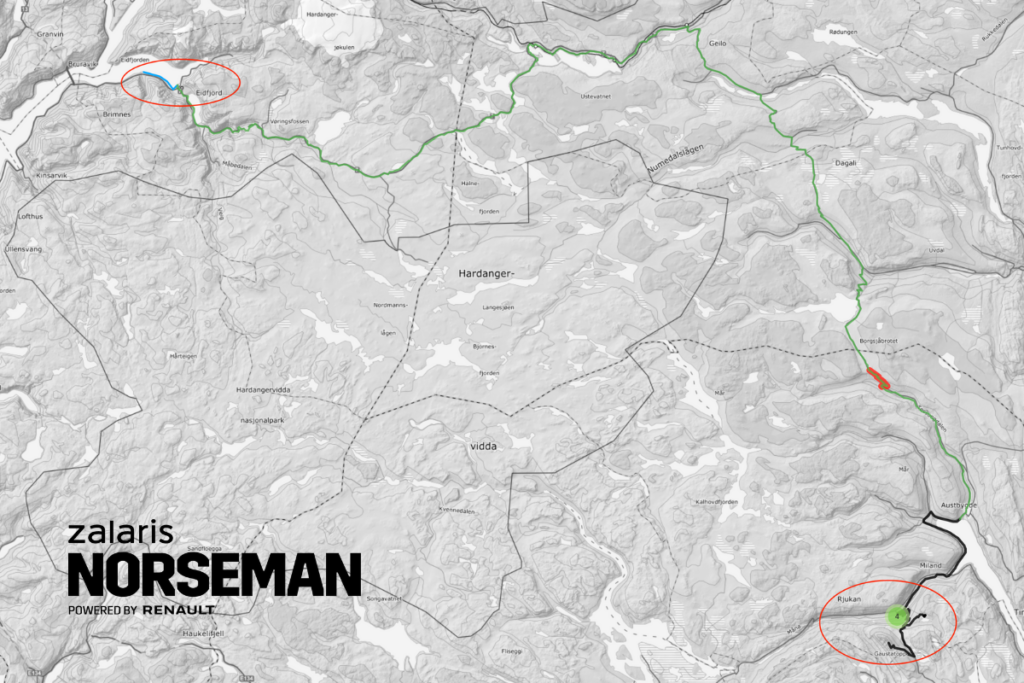
Adelaide: We’re going to mirror your Norseman race with Joachim’s journey in just a bit. But before we do, because some of us aren’t unfamiliar with the Gunnerside operation, would you go through the three operations which happened, Grouse, Freshman and Gunnerside?
Russ: Initially, the Norwegian resistance, with Tronstad in the UK, are keen for many reasons to use commando-style operations against Vemork, recognising it’s almost an impossible bombing target, and for all of us that have been up that valley from the lake, you’d recognise the impossibility with Second World War technology of bombing of any kind the hydro-electro facility in that valley.
The other reason is that bombing, inherently, creates an enormous amount of collateral damage and the thought for these Norwegian folk of their relatives, because many of the individuals involved in these operations came from that valley, or that area. Essentially, any kind of bombing campaign would have killed their relatives, which for you and I is just… you can’t actually think in those terms in the life we lead in the 21st century, those kind of questions.
They win permission from the War Cabinet for it to be, what they call at the time, a combined operations under Lord Louis Mountbatten operation, and that’s distinct at the time from SOE, but they’re cooperating and collaborating. And Operation Grouse, under Jens-Anton Poulsson, is a five-man team that’s parachuted onto the Hardangervidda in October 1942, and they parachuted in, in anticipation of guiding 40-odd commandos to Vemork, where they will overpower the German guard force and destroy the heavy water facility.
It’s no mean feat to be parachuted onto the Hardangervidda in October, it’s already mid-winter conditions. For those of us that live in the UK, imagine the summit of Ben Nevis being at the same height, although the weather on Hardangervidda is generally more extreme, because at least there’s a bit of land between the west coast of Scotland and the top of Ben Nevis, whereas the Hardangervidda just gets the full force of the really nasty weather.
They take a number of days to sort themselves out after an indescribably hairy, 1,000 foot parachute drop in the night onto the Hardangervidda, and Paulsson and his team then radio back to the UK to say, “Yeah, we’re all in one piece” about a week later because, without going into too much detail, they get sent in with the wrong battery for the wireless that they’ve been sent with, and the whole thing is an epic in its own right.
But they are ready to receive Operation Freshman, which is two Airspeed Horsa gliders, which you wouldn’t drag me into kicking and screaming in a million years. But as testament to the willingness and bravery of these guys, 35 Royal Engineer commandos volunteer for the operation, they aren’t forced to do it, all of them are given a choice. Those with family and kids are given the choice not to do the operation, but to a man they volunteer, and they are towed behind two Halifax bombers from an airfield in Scotland across the North Sea in November 1942 with the intention of being dropped about five miles from Vemork up on the high ground on Hardangervidda. From there they are going to be guided to Vemork, the hydroelectric station by the five men of Operation Grouse.
Unfortunately, as seems to always be the case, even in my military career, technology never works and the beacon that they’re using, called Eureka, doesn’t work. Neither Halifax is able to drop their glider anywhere near the Operation Grouse reception committee and very sadly one Halifax bomber loses their glider on the way back to Scotland, as the rope iced over, as you would expect at that time of year and the two become separated, causing the glider to crash on the Norwegian coast, southwest of Eidfjord and Vemork, but the Halifax makes it back to Scotland.
Sadly, the other Halifax and glider crashes itself and all the air crew and pilots are killed. A number of the 35 commandos are also killed in the crash. But those that survive, because of their numbers, are taken in by the Norwegians, but the Norwegians are obliged because of the state of the individuals to involve the Germans, it’s with the agreement of the British saboteurs that recognise that they’re going to put the Norwegian population at risk.
Again, some of your listeners may be familiar, but the commando order issued by Hitler in 1942 dictated that any commando found in the occupied territories was to be shot on site, which was, of course, in direct contravention of the Geneva Agreement that you wouldn’t treat prisoners of war in that fashion, and so the 35 commandos are all murdered or killed off by the Gestapo and the SS in Norway.
So, of the 45 individuals involved in Operation Freshman, only the Halifax crew made it back to Scotland, which left the five men of Grouse on the ground, and they’re told by radio the next day and over the ensuing week, when it becomes apparent that Freshman has failed, that unfortunately all the commandos have been killed or are unaccounted for.
But rather than bury their heads in the snow on Hardangervidda, Jens-Anton Poulsson immediately volunteers to undertake the sabotage with his team of five men. Now, the Allies had kind of worked out that they needed 40 commandos to go against the plant, which was heavily guarded by the Germans, who found maps etc., on the commandos and put two and two together and work out that Vemork is the target. So they rapidly increase their defences at Vemork to near 300 or 400.
So, even with those odds, Paulsson and his team decide that they want to have a go, but it’s now handed over completely to the SOE from Combined Operations, and they’re told another SOE operation will be launched.
A week after all of those guys are killed, Joachim is called into SOE’s head office and told, “Select five men, the six of you are parachuting into Norway to meet with Operation Grouse and 11 of you will then, as Operation Gunnerside, conduct a sabotage of the hydroelectric plant in Vemork.”
Without hesitation he steps forward, selects his five individuals and they start training. Yet, over the winter of 1942, Jens-Anton Paulsson and his team of five are forced to survive on the Hardangervidda, which I’m told by and also have some small experience of that region in the winter, and I can tell you it’s horrific, and we were extremely well equipped, and it’s horrific.
How these guys survived, I’ve no idea. There are stories of them just about starving to death, managing to shoot a reindeer. They survive, given their knowledge of the region, on reindeer moss, so effectively they dug down through the snow to find moss on rocks, which they then boiled as tea to avoid scurvy, they needed the vitamin C out of the reindeer moss, and they set to surviving until Gunnerside can join them.
Grouse’s survival on the Hardangervidda is a survival story in its own right regardless of what Joachim and Grouse then did. But, fast forward to February 1943, and Joachim’s teams have two attempts to parachute onto Hardangervidda, they’re turned around on both occasions by not being able to find Grouse on the ground again. Eureka, the radio beacon, let’s them down.
Eventually, Joachim and his team say to the pilots, “Whatever happens on this run, you are going to parachute us onto Hardangervidda and we’ll find our own way.” And apparently, they literally did exactly that, they flew over in February 1943 and remember, in the Second World War, you needed the full moon to conduct these operations, so they only had a window of about three or four nights every month.
Each time they wanted to go in December, they couldn’t because of the weather, they had to tell Grouse, “Sorry, guys, you’re going to have to survive for another month on reindeer moss tea, thanks very much.”
In January, you can imagine the Grouse guys by this stage are starving, dying, frozen to death almost, and they get another radio message from the UK saying, “Hey, sorry guys, we’re just having a steak and chips down the local pub, the weather’s too bad, hang on with the reindeer moss and reindeer steak, we’ll be there in a while.”
By February, Joachim and his team are kind of like, “Right, we’re going whatever, we really don’t care.” So, they jump out over the Hardangervidda and we’ll come to the race course and how close you actually get to this point on the course.
They’re dropped 40 kilometres from where they’re meant to be, they have no idea, because it’s just a white blanket of nothingness. In the first five days, it’s spectacular talking to Joachim about it, the weather is so extreme, that they spend the rest of the night finding their stores, which are littered over the typical landing zone area where things get thrown out of an aeroplane, they don’t tend to land in the same place. They find a hut which they believe is 30 miles from where they actually are, and then the weather blows in.

The weather is so extreme for five days that they can’t leave the hut, and at one point I remember Joachim telling me that they … these huts are tiny, so they’ve got six of them in this hut, and the smoke from the fire that they’ve lit to keep themselves alive, because you’re probably looking at windchill of, I don’t know, minus 20/30, is choking them because smoke’s coming back down the chimney.
So, Joachim said he left the hut to go up onto the roof to fix the chimney, the wind was so strong he got blown off the roof about 30 feet into a snowdrift, and then spent two hours trying to find his way 30 feet back to the hut. When he gets back to the hut he recognises that unless he fixes the chimney they’re all going to die anyway, so he goes up on the roof again, and this time he doesn’t get blown off, fixes the chimney, and they’re able to surface five days later.
They leave the hut and they work out where they are, remarkably. As they leave the hut the first time, they travel a few kilometres and realise they weren’t where they thought they were, go back to the hut, find out where they actually are, and then they make their way, essentially what would be southwest at that point, and by sheer chance they meet up with Grouse that are out looking for them, so they’re finally together on about the 23rd of February, 1943, and so that’s when we enter the story. how Joachim, Operation Gunnerside and Operation Grouse on the Hardangervidda, ready to raid Vemork.
Adelaide: It’s such an insane, epic and incredible story all rolled into one, so thank you so much for being so eloquent in getting us to this point, because now we’re going to mirror your journey of Norseman last year, so 2019, with Operation Gunnerside and Joachim’s team to sabotage Vemork. So, as you said, they’re now, I believe, 20 kilometres from Eidfjord.
Russ: When they landed on Hardangervidda, that’s probably the closest point as we make our way from Eidfjord to Geilo. You need a road to cycle on for Norseman, so you have to go around, because there’s nothing across the Hardangervidda. So essentially, where they do the long side of a triangle, we do the two straight sides, going across to Geilo and then down. But yeah, you’re right, they’re not that far from the line drawn between Eidfjord and Geilo.
Adelaide: Great. So when you’re doing the swim, what was going through your mind with Joachim’s journey?

Russ: It was just great. Going out on the ferry. Joachim died in October 2018, which was incredibly sad. And it’s fundamentally, as you’ve said, the reason I wanted to do the race, it was really in his memory because I’m not an ironman, I don’t class myself as that kind of individual by any stretch. I did one to see if I could do this kind of race. Yeah, I can swim and I can cycle, and I guess I can run a bit, but I’m not a natural athlete in the same way that you get these stick insects that turn up on the start line and you look and think, “Oh my God, have I arrived at the right place here?”
So, I’m going out on the ferry with both Lucy Gossage and Louise Minchin, and they are the epitome of energy, they’re like zebedee, bouncing around and I just think this is great.
At the time though, I remember listening to Lucy saying on Norseman Radio, that there are so many people on that ferry that are slightly po-faced, and for their own reasons wrapped up in themselves. And I was on reflection a bit self conscious, because I did have a hood of a hoodie up, but I was actually thinking about Joachim at the time, to be fair. And you get this hugely privileged isolation on that trip out, 4/4.5KM out into the Hardangerfjord.
As you go out, you’re just getting dawn coming up on the starboard side and as you turn on the port side, if you look onto the cliffs on the right-hand side, you get an impression of the scale of the Hardangervidda.
Norway, for those listening who haven’t been there, and so many who listen who have been there, it’s just the scale of the place which is truly awe-inspiring. If you haven’t been there, you cannot help but be struck by the almost primordial beauty of the place which always, of course, comes with huge risk.
As I looked up I thought, “Wow, here we are, Joachim.” Back in ’43, the route they took to actually drop onto the Hardangervidda, you could almost imagine the plane flying up the Hardangerfjord and using the fjord on the left-hand side as a kind of reference point, because it was so difficult to reference anything on Hardangervidda at all.

And there we are, if you’d imagined looking down from that plane in February ’43, you could have seen the car ferry making its way out from Eidfjord with these idiots that are about to undertake this ridiculous event called Norseman.
I knew Joachim well, and he would have thought we were idiots, equally as I thought he was a crazy, crazy guy for doing Gunnerside. It was quite good fun in that regard. I have huge respect for so many people who do jump off that boat because if you haven’t done that kind of thing before, it must be really, really intimidating. But for me, it was just hugely exciting. I couldn’t wait. I love jumping off boats in the middle of the night, and even better, into a fjord.
On the way out, I did reflect on Joachim and his life, and the swim on the way in. I breathe left, but I did take the opportunity to breath right a few times and just look at what is the edge of Hardangervidda, effectively, on your right-hand side before you get out of the water at Eidfjord.
Adelaide: So the start of Norseman at Eidfjord is kind of the start for Joachim too. We’ve got to the point where they’re on the Hardangervidda, and you’re coming out of Eidfjord for the swim. Then, when you’re cycling to Geilo, where is Joachim in relation to your journey? And how did that influence your journey for the first half of the cycle?
Russ: Your closest touch point to where they were on Hardangervidda is once you’ve done that 40-odd KM climb out from Eidfjord onto Hardangervidda itself, and in 2019, it was really, really spectacular, it was so beautiful, and we were coming up through fog. So, you were soaking wet counterintuitively from the fog.
I don’t think you ever really get a sense, other than from looking at your GPS, that you’ve actually got on top of Hardangervidda, because it’s so rolly once you go up there, but you kind of know that you’re at 40K, and I knew that at about 40/45K, that was the closest point I would get to where Joachim and his team started their journey.
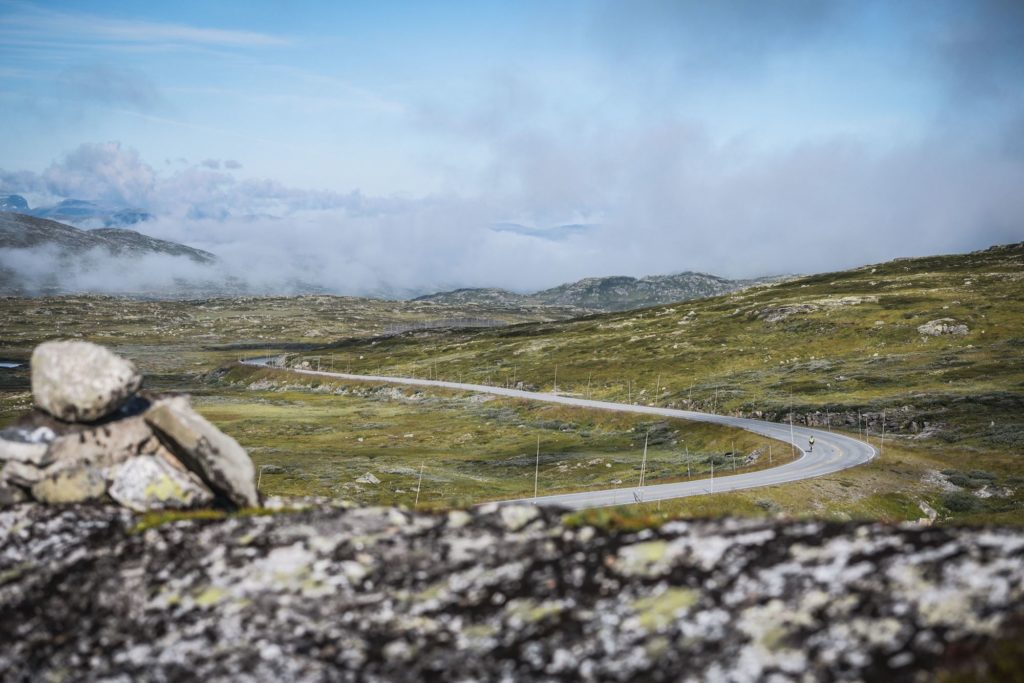
As we then slip away down to Geilo and effectively you drop off Hardangervidda a little bit, he is making his way, as I described … Well, to start with, he’s surviving for five days trying to avoid dying of hypothermia and frostbite, and whatever else Hardangervidda had to throw at them. And I think everyone will remember the poles on either side of the road, and I remember cycling along on and off the drops, or the bar things from your triathlon bike, and thinking, “Jesus, these poles are 10, easily 10 feet, 15 feet high.” And what you realise is that they’re there so the snow plows can keep that road open in the winter, which is so counterintuitive for us in 2019 when the weather was so spectacular and Hardangervidda just looked perfect.
It’s impossibly difficult to imagine that same terrain with 15/20-foot deep snow across Hardangervidda. And it is so difficult on the bike to imagine that, that you’re cycling along, essentially, what four months before was a snow corridor.
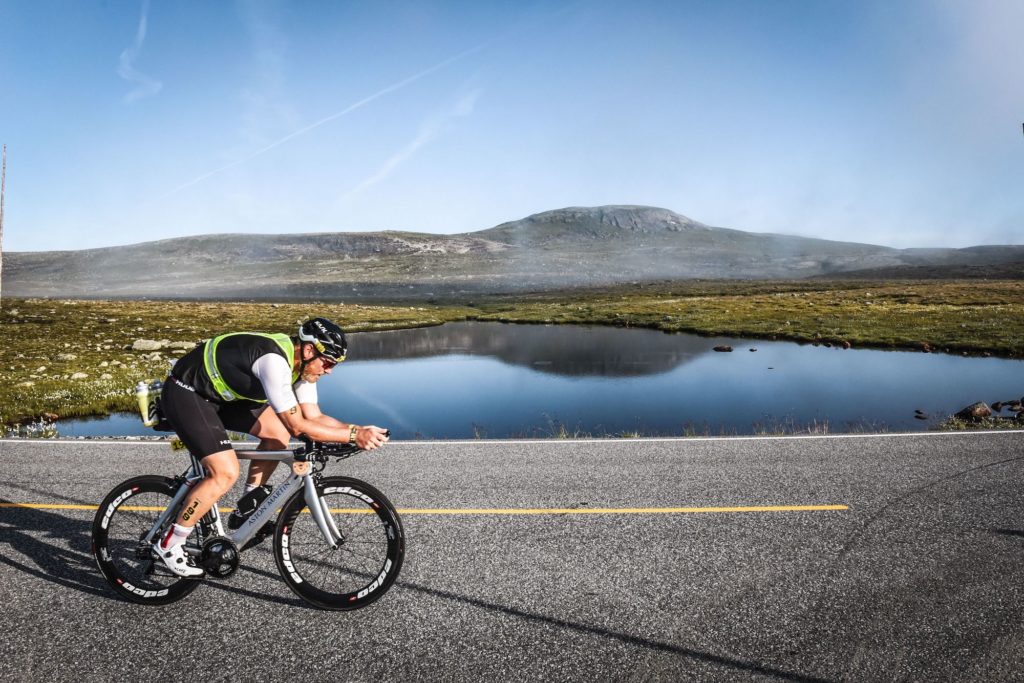
Then to transcribe yourself into their situation mid-winter on top of Hardangervidda, probably the most inhospitable terrain in Europe in the winter. I mean, yes, of course the Alps are unpleasant, but the Hardangervidda is really foul and can kill you quite happily in a matter of hours if you’re caught in the bad weather. That contrast.
I also recollected on the fact that here I was with my energy drink and my rather tasty bar, and I thought of Jens-Anton Paulsson on his reindeer moss tea and reindeer entrails for breakfast and thought if there was any point at which I was feeling slightly tired on my race bike, I didn’t have a lot to complain about. It was kind of like, “Yeah, just think of those guys.” I think they were still eating pemmican at that time, famous from the Shackleton and Scott expeditions in the South Pole.
So we get to Geilo and then we fly south towards Lake and T2.
Adelaide: Just to summarise the journey and make sure I’m on the right track as well as our listeners. When we’ve jumped from the ferry, swam 3.9km to shore, and then cycled to T2 at Lake Tinnsjå, and I’m fast forwarding quite a bit, but Joachim and his men, they would be skiing towards that area as well, towards Lake Tinnsjå?
Russ: That’s right. We’d be taking broadly parallel routes. They are looking to place themselves above Vemork at Rujkan on top of Hardangervidda. And when we arrive at T2 and run around the lake, which has its own place in this story but later on, and then we turn away from the lake, we’re running up the valley, and to our right now is Operation Grouse and Gunnerside. They’re literally on the high ground to our right as we run up to Rjukan. And they’re there at that point thinking, “How the hell do we get across to that hydroelectric plant?”
I know when we run it, we don’t actually see the hydroelectric plant, it is literally just around the corner as you look at the valley. As we turn to the bottom of Zombie Hill, if you look straight ahead, and I definitely was … I was running up that river looking ahead thinking, “Okay, high right, you’ve got your 11 men, directly ahead you’ve got this huge valley, and then on the left just around the corner you’ve got this spectacular hydroelectric plant which they are intending to go in and sabotage.”
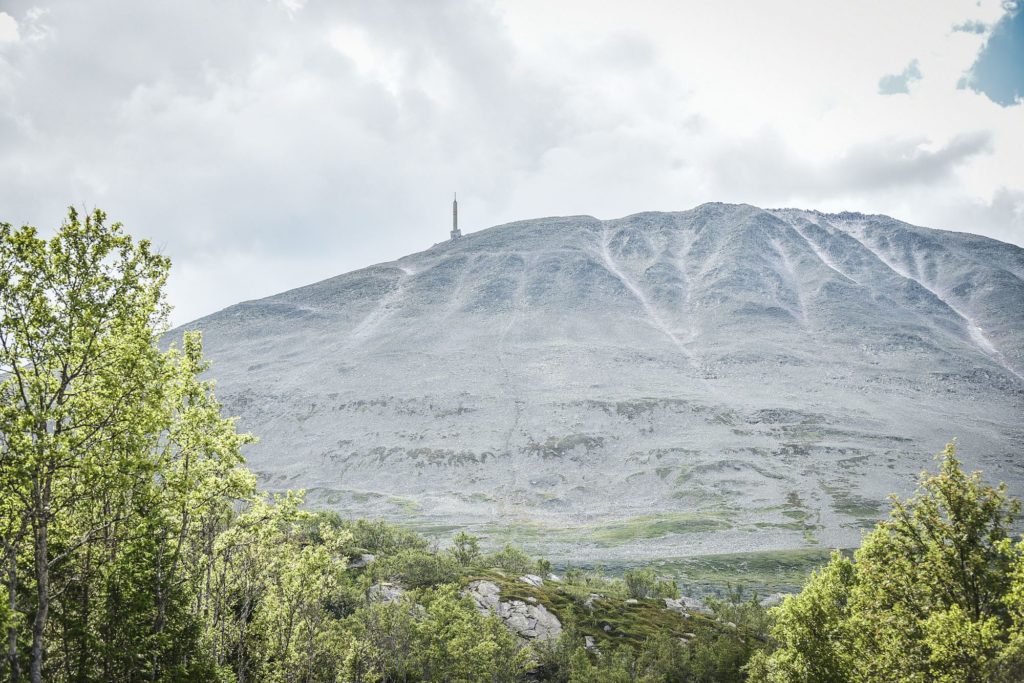
Adelaide: In this point of your story, we’re now going into that moment when they do sabotage the hydroelectric plant, which is when we’re running up Zombie Hill and on the opposite side, they’re running away from the Germans?
Russ: That’s exactly right. So, remarkably, they decide to descend… there is a footbridge across the valley, which the Germans believed was the only viable way in to the hydroelectric facility, so it’s heavily guarded. And then, also, the pipelines running down off the hill on the Gasutatoppen side, down into the hydroelectric plant, are also thought to be an area in which a commando raid could come from.
Being Norwegian and being beyond the scope of the German imagination at the time, they decided to descend into the valley and climb up to the hydroelectric plant on the other side. And as you go further up that valley, it becomes much more extreme. You’re looking at proper cliff climbing to get down and back up again. But nonetheless, the 11 of them managed to get across down into the valley, up the other side, they successfully enter the hydroelectric facility unnoticed by the German guards, which is a huge achievement. Although, bear in mind … I’m not belittling what they did, but the noise that these hydroelectric plants make is huge, so it does probably lend itself to getting yourself around the place unheard.

They break in to the area where the electrolysis is taking place, they speak English to the Norwegian guy, the night watchman in the hope that it will be recorded that it was a British operation to avoid any reprisals against the Norwegian population. Having practiced on an exact replica before they left from the UK, built by Leif Tronstad and another guy who also left Norway and helped them with the planning of the operation from the UK. They put these jackets of plastic explosives around the 18 electrolysis machines, and they set time pencils for two minutes, and then Joachim, to be doubly sure, set some 30-second time pencils, so if the 30-second time pencils don’t work then the two-minute ones will.
As they light the fuses, they get themselves out, they hear the dull thud, apparently, just almost only that, a dull thud of the explosives going off against the background noise of the hydroelectric plant, and they escape back down towards Rjukan, and they leave equipment behind, including a Tommy gun to give the Germans doubly the impression that it was a British operation, so they deliberately cast aside some equipment.
They drop into the valley, and as we run up Zombie Hill, you look back across the valley and the exact replica exists of Zombie Hill on the other side, and it’s really a zigzag track.
Interestingly, at that point, those 11 guys have been on Hardangervidda for a week or more and are faced with a 250KM ski to Sweden, but the first thing they’ve got to do, is evade the 300 or more Germans being pulled from Vemork and Rjukan, which they believe are chasing them up the hill towards the summit.
So, as we make our way up Zombie Hill in our dilapidated state, you look back across thinking, “Well, I’m a lot better off doing it this way than being chased by 300 German soldiers who are going to shoot me on sight regardless. They’re not going to treat me well and look after me, and give me a cup of tea and say, “Hey, thanks for that, what a great operation.” They’re going to kill me on sight. And they’re probably going to torture me first as well.”
My trip up Zombie Hill was a much more pleasant affair than when Joachim and his team did it in March up the other side. Nonetheless, they managed to get to the summit, not using a road, so where we have the luxury of that kind of winding road, they’re determinedly avoiding the road, scrambling up through the trees, which you can imagine is absolutely horrific. And by dawn they make it onto the plateau.
As you know, at that point, they then go back to where they dropped off their rucksacks, they take stock of everything, and then Operation Gunnerside separates from Operation Grouse, and Joachim and his team make their way to Sweden, which is an achievement in itself. 250KM over 10 days skiing at night etc., but we can no doubt talk about that in a moment. That is basically the Zombie Hill experience for them.
Adelaide: It’s such an insane part of the story. When you finish at the top of Mount Gaustatoppen, Joachim has finished that section of their operation, so what were your reflections about his and his men’s journey when you finished Norseman?
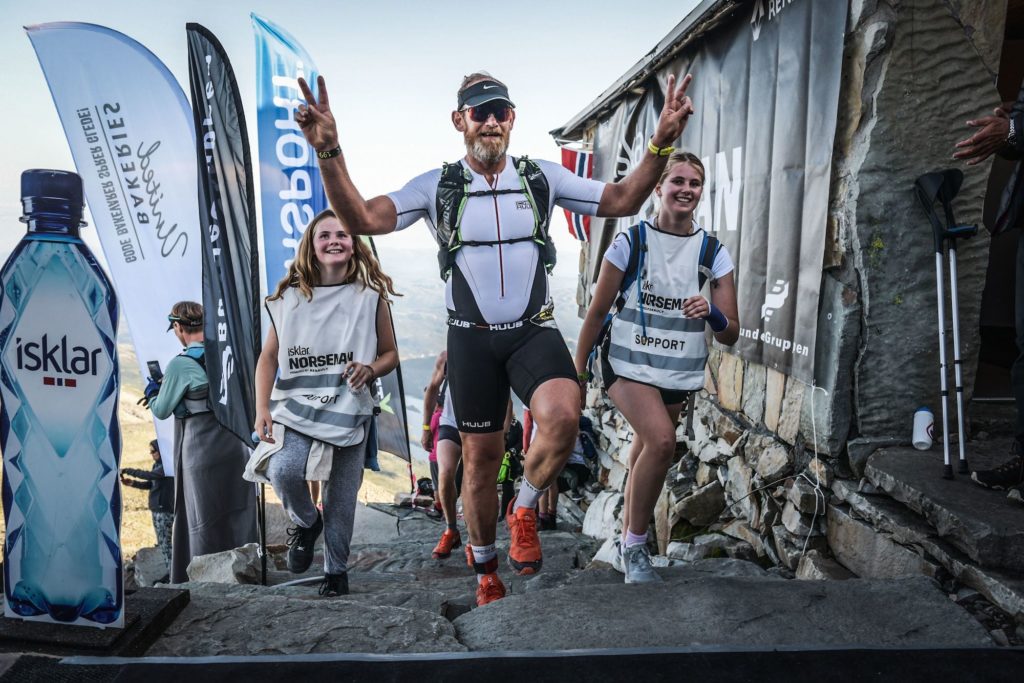
Russ: We were so lucky in 2019. At the top of Gaustatoppen was just the most glorious evening. I think it was probably 7:30 in the evening, after about 14 hours of racing. And it was just so clear. I had one of those Garmin watches and you can set it to be a compass face. So, I remember setting the compass face and roughly knowing that if I looked northeast, I was looking towards Eidfjord.
From the top of Gaustatoppen, on that night in 2019, you could pretty much see the entire route and story of Grouse, Freshman and Gunnerside, and you’re overlooking the terrain they made their way across, imagining it in February, March 1943. And then you’re looking back across to the other side of the very, very extreme valley which we come out of, and imagining Joachim saying goodbye to Jens-Anton Paulsson, that he and his team remain in Norway, continuing the resistance and forming resistance units. Joachim and his team make their way essentially northeast to the Swedish border.
I swear, on that day in 2019 you could probably see a good proportion of the 200KM towards Sweden. It was such a spectacular evening. Of course, we get handed a glorious mug of ham soup which is just divine because of the salt in it. I remember thinking, “Oh, this is so lovely.” Meanwhile, they’re picking up their rucksacks thinking, “Here we go, we’ve got at least 300 German soldiers chasing us, we’ve probably got thousands more being deployed to find us. And, yes, we’ve successfully.”
Actually, in fairness, they don’t know, they know the charges have gone off but they haven’t been able to go back and check, right? So, they’ve literally quit the scene hoping that they’ve done their job. I think, thankfully, quite early on they get a radio message saying that the destruction was complete, they completely destroyed the 18 electrolysis machine, so the operation was an unqualified and resounding success, which so few of those type of operations are.
I sat exhausted, flat out on top of Gaustatoppen, and looking back across that terrain was incredibly humbling. You can kind of project yourself back over what was 70 years. It’s really easy because the terrain doesn’t change in 70 years particularly. They came across that same terrain, albeit we enjoyed it in July/August with our energy drinks and rather nice food, whereas they had very much more adverse weather conditions to deal with and adverse circumstances, and fully expected to lose their lives. I don’t think anyone goes in to Norseman expecting to lose their life. It feels like you’re about to a few times, but you don’t go into it intending to. Yeah, so it was pretty special sat on top of Gaustatoppen thinking about that.
Adelaide: Although your journey finished on top of Gaustatoppen, we’re going to return to the significance of Lake Tinnsjå, which is at T2. So, what happened here a few months later after Operation Gunnerside?
Russ: Very sadly, although the operation had been a complete success, the Germans were so determined to continue the production of heavy water that by April/May 1943, they were already resuming production of heavy water at Vemork, which must have been so depressing for Gunnerside, the families of Freshman never knew what they died doing at that point. But they did manage to restart production.
I think as the war draws on, the Allies and by that point, Robert Oppenheimer in the States is conducting his own research with his team, and then there’s various teams in Germany conducting their work into heavy water.
At that stage, you either used graphite or heavy water to slow this atomic reaction, so they’re desperate for hundreds of kilos of the stuff. And recognising that the plant has resumed production, and also that the race for the atomic weapon is on now, fully fledged, no holds barred. Very sadly, the US decide with the Brits that they will conduct a bombing raid against Vemork, against the advice of the Norwegian resistance, against the advice of the free Norwegians in the UK who’d said it was too difficult a target.
But without telling the Norwegians, and this must have caused Leif Tronstad the most awful pain, they actually conducted a bombing raid and they killed 20 or 30 civilians in and around Vemork and Rjukan in early 1944or late ’43. Unfortunately the worst of it is and it’s no fault of the pilots, but some of the pilots were sent to a target in Oslo that they couldn’t find. They were given the secondary target of Vemork and they came back and mixed up the fertiliser plant in Rjukan for the plant at Vemork. So again, as you run around that area, and it’s so difficult for us to image as Brits what life under occupation must be like, but all Norwegians have family, immediate family in recent generations that lived through occupation, and probably around that area that we run through there are individuals whose grandparents were killed in that bombing raid.
The Germans then decide, although the bombing raid is unsuccessful, as the Norwegians have told them it would be, the Germans recognise that the Allies are going to continue hitting Vemork again, and again, and again. So they decide to move all of the heavy water from Vemork to Germany and that involves a train journey down from Vemork, through Rjukan, down to precisely the point where we turn away from Lake Tinnsjå. Famously, the Norwegian resistance are tasked to destroy that convoy of heavy water. Imagine, it’s guarded by hundreds and hundreds of German troops. They recognize it’s going to be an obvious target, but a small team of three manage to place charges on the vessel, which will cross Lake Tinnsjå with about 550 kilos of heavy water.
Again, it’s so difficult for us to appreciate what it must have been like for those three individuals having reconciled themselves to the fact that the only way they can do this is to sink the ferry, and if they sink the ferry, Norwegians will die, probably their own friends and family. It’s just beyond our ability in the 21st century to understand the gravity of that kind of decision. Nonetheless, they do and they successfully sink the ferry.
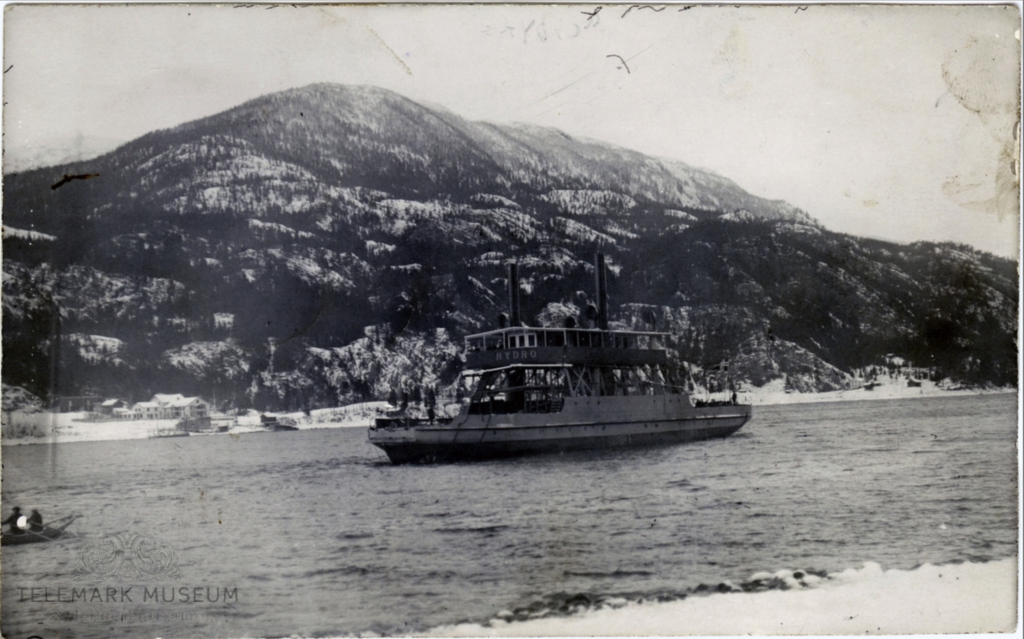
So, as you run round Lake Tinnsjå and as I ran round that lake with John, my good friend who helped me out on the race, looking to our left into the lake, you recognise that at the bottom of that lake is 500 kilos of heavy water to this day, the DS Hydro, the ship, and I think 20-odd Norwegians were killed and drowned who couldn’t escape the vessel as it sank, and that’s a human tragedy in its own right. But again, it went a great way to preventing the Germans developing the atomic weapon. Of course, those individuals are to be celebrated for what they did, but it can’t have offered them much peace when you’re trying to reconcile the consequences of your actions, even though all of us would say that they did the right thing. Terribly difficult.
Lake Tinnsjå is tinged with some really, really sad memories, and it’s something that can distract you as you’re running round the lake and can make you feel very humble indeed.
Adelaide: I had no idea until we started having this conversation a few days ago, how much history there is in that area, and how much, as you said, tragedy and success intermingled in a very strange way. So, thank you.
Russ: It’s humbling.
Adelaide: Very much so. With all of this in mind, what does Norseman mean to you?
Russ: First and foremost, and always will be, it was in memory of Joachim and a small celebration. It was a celebration, because really I think Norseman is a celebration, right? It’s the ability to hold an event like that, to enjoy an event like that, and it’s incredibly special. The humour of the Norwegian people, that wonderful black humour, which is so close to Royal Marine humour, the humility is such an attractive quality.
The race is incredibly humbling. You can’t undertake a race like that without visiting places in your mind and persona that you probably don’t find that attractive. But the race just means that, it’s a celebration of freedom. And for me, it’s the freedom that Joachim, his team, Jens-Anton Paulsson, Leif Tronstad didn’t actually survive the war, very sadly, he was killed in 1945. But the actions, the selfless actions of those incredibly brave Norwegians are, essentially, what allow us today to participate in that race and the privilege of being able to enjoy that environment, is solely down to their selflessness. Without that, our lives would be very, very different, and we may well find that we didn’t enjoy quite the same freedoms.
So that’s what Norseman means to me. Just a wonderfully humbling and friendly experience, and an incredibly treasured one.
Adelaide: When we spoke earlier, I loved that you mentioned the crossover between Norseman’s and SOE’s motto…
Russ: The SOE’s motto was: “spirit of resistance”. And never was there, I don’t think, a better way of approaching that type of endurance race. The spirit of resistance. And Louise, I hope Louise Minchin listens to this because, for me, she is the epitome of that type of spirit. It’s that dogged, “I am not letting this beat me, I will never give up.” I mean, it’s so different. If you’re a six-foot-three, 75 kilos wet through whippet, it’s probably, yes, an equally humbling experience, but the embodiment of the race is that spirit of resistance, and that was what Joachim and his team, and all of those SOE people across occupied Europe, and then laterally in Burma and elsewhere across Asia embodied, just that, “I’m never giving up, and I am always going to resist. I am always going to come through. With the last bone in my body I will make sure that I’m there.”
And I think Norseman brings that out in you as well. There are plenty of occasions where everyone, I think, has to explore a bit a spirit of resistance.

Adelaide: Most definitely. Before we move onto the quick fire round, is there anything else that you would like to add to today’s conversation?
Russ: There’s one wonderful quote that Joachim’s famous for, which isn’t well known or well understood, but I just thought it was a great thing to leave our story of Joachim and our homage to him, in some respects.He was quoted as saying:
“You have to fight for your freedom and for peace. You have to fight for it every day to keep it. It’s like a glass boat, it’s easy to break, it’s easy to lose.”
And we can sit in 2020, and we’re very lucky, I mean, obviously, in this current situation [COVID-19] it’s terribly challenging for everyone, but you would hope that in memory of people like that, we resist the temptation to descend into nationalistic, inward looking tendencies, which tend to be the way the world goes when faced with adversity.
I’m sure if Joachim and his colleagues were still with us today, they would be saying, “No, find a way through this.”
It’s essential for all of us to look forward, to value that kind of freedom and value piece. So yeah, I just thought that was a nice quote to finish our discussion about Joachim on.
Adelaide: Thank you so much. That’s a wonderful quote. So, we’re going to go into the quick fire round now. And I’ll be interested to see what you reply to this question:
How would you describe Norseman in one word?
Russ: Humbling
Adelaide: Great. Next question: which three athletes or people would you like to see race Norseman?
Russ: Michael Jordan. I think he’d be unbelievable. He’d never stop.
Ben Ainslie, the sailor, because I think he probably epitomises that spirit of resistance. He may not be the epitome of an athlete that would do Norseman, but I know Ben and I know he would do incredibly well and survive, and surprise a lot of people.
As to the third athlete, I’d like to say Captain Scott. Maybe not someone you would think of as an athlete, but he’d probably do it smoking a pipe, and just eating whale meat and pemmican, and still get up there in 12 hours.
Adelaide: Thank you so much for coming on Norseman Radio. It’s been an absolute pleasure to have you on and to learn more about the history of Norseman as well, and add this extra element into the race, so thank you so much.
Russ: It’s been a huge pleasure. And I wish anyone that goes forward and does the race in 2021 onwards that they take a moment to remember and reflect on that most extraordinary history that the region has, and it’s such a celebration of an extraordinary part of our collective history in Europe and globally, I think.
Adelaide: If our listeners would like to learn more about Joachim after this episode, where’s the best place for them to go?
Russ: There’s very little really good stuff written on this. It’s just one of those things that you get the odd article, but there’s a wonderful book called The Winter Fortress by Neil Bascom, and very few people do the story justice and cover it accurately, but Neil has done a great job of making it very accessible, because he writes it in a way which is gripping, so I’d recommend that. It’s a fantastic story and it brings it all into perspective, and it’s a wonderful thing to have in the back of your mind as you are undertaking both the training and the race itself.
Adelaide: Awesome. Thank you so much. Have a wonderful day.
Russ: Thanks, Adelaide.
——-
About Adelaide Goodeve
Adelaide is a member of the Norseman media team and a professional mindset coach. Find out more about Adelaide here.
About Russ Corn
Russ Corn is an ex-marine and the CEO of a due diligence business called Fulcrum Diligence based in London.
In 2019, Russ completed Norseman and achieved the black tee in the memory of one of Norway’s national hero’s, Joachim Rønneberg.
Joachim Rønneberg led a team of 11 people to successfully sabotage the heavy water production plant at Rujkan, under extremely difficult and extreme conditions. The route Rønneberg and his team took is close to the Norseman race route, which Russ shares with us through his own Norseman experience.
If you’d like to learn more about Joachim’s journey, this is the book Russ recommended: The Winter Fortress by Neil Bascom
——-
About Norseman Radio
If you’d like to listen to interesting and intriguing stories around the Norseman Xtreme Triathlon and fully immerse yourself in the experience, then Norseman Radio is for you.
This podcast is not just for those who’d like to jump off the car ferry into Eidfjord and run up Zombie Hill.
You can find Norseman Radio on:
Connect with us on Instagram, Facebook, on our website and by signing up to our email newsletter!


